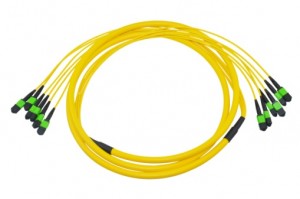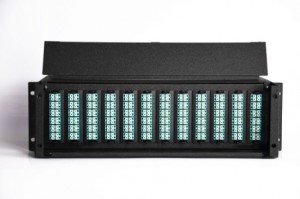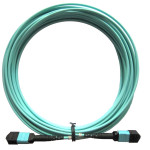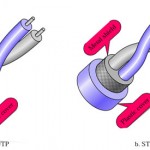Narrowing down and selecting the right combination of cabling components can quickly become overwhelming, especially when you consider the hundreds of comparable components available on the market. Each component has its own advantages and disadvantages, cost variations, and compatibility levels. This is your best chance to get the right equipment purchased and deployed and to avoid future cabling issues. As you make purchasing decisions, look for compatibility, ease of installation, cost, density, durability, aesthetics, accessibility, flexibility, and delivery times. The components that make up the cabling structure range from data ports to patch cables to panels to cable managers. You will find a large selection, and as a general rule you should be able to mix and match vendor equipment, as long as they comply with the same standards.
Patch Cables
Patch cables are used to connect end devices to patch panel ports and to connect ports between two local patch panels. A big issue with patch cables is the design and quality of the terminations. This is especially true for RJ45 copper terminations. Keep in mind that the patch cable is a cabling component that will experience the most wear and tear.
Review cables from a number of different manufacturers and consider the following:
- Specification of the cable; avoid cheap, low-quality cables
- Compliance to EIA/TIA/IEEE standards
- Thickness of the copper cable; thicker is better
- Flexibility of the cable; the less cable memory the better
- Connector design and quality; this is a matter of personal preference. Ensure that you have exercised several similar cables with your network equipment and other cabling components
- Availability of colors and categories, since you will want to standardize for current and future needs
- Support for future applications
Patch Panels
Patch panels allow easy management of patch cables and link the cabling distribution areas. Multimedia patch panels, which allow several different cable connectors to be used in the same patch panel, are ideal. The main types of connectors that should be considered are LC for fiber and RJ-45 for copper. Although mixing cable types within the same patch panel is not best practice, it is good to have this flexibility for housing ad-hoc cable types. The best practice is to separate the fiber cabling from the copper cabling, using separate patch panels.
Colored jacks or bezels in the patch panel allow easy identification of the ports and the applications they are intended for. Patch panels also come in modular styles, for example, for an MPO structured system. The tradeoff for the higher cost of materials is this: some of this cost is recovered from faster installation and thus lower labor cost.
Spacing between ports aids insertion and removal of cables
- Sturdy connectors: some panels have loose connectors and tend to fall out during cable installation and removal
- Orientation of ports in the panel: the top row and bottom row cable clips should face outward.
- Test these connections with your patch cables.
- One-piece dust covers for ports (recommended for high traffic areas)
- Density supported (24 ports or 48 ports per lU panel)
- Compatibility with your racks
- Space for labeling on the front of the panel
- Compatibility with Industry standard connectors and racks
- Added cable support for the intended cable types on the back of the panel. This is critical and overlooked by many manufacturers.
Horizontal and Backbone Cables
Choose the fire-rated plenum type. These cables may not be as flexible as the patch cords, because they are meant for fairly static placements, for example, between the EDA and the HDA. There are no high-density copper solutions, but you can choose a modular cabling system such as the MRJ21 connector system. For fiber, high density involving 24-strand to 96-strand cables is adequate. Fiber breakout cables provide additional protection, but add to the diameter of the overall cable bundle. For fiber, MPO trunk cables (up to 72 fiber strands can be housed in one MPO connection) can be installed if you are using MPO style cabling.
Evaluate the cost of materials and labor for terminating connections into patch panels. These cables will most likely end up under raised floors, or over the ceiling, or in overhead cable pathways—out of view and touch from end users.








